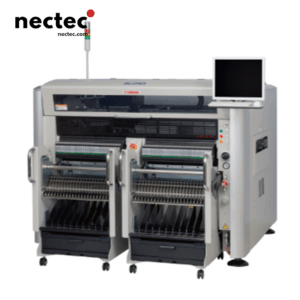In the fast-paced world of electronics manufacturing, efficiency and precision are key factors that determine success. One of the machines that has revolutionized this industry is the pick and place machine. Among the leaders in this field is Fuji, a brand synonymous with quality and reliability. While brand-new machines offer the latest innovations, used Fuji pick and place machines can provide significant advantages for manufacturers looking to optimize their production processes without breaking the bank. In this guide, we will explore everything you need to know about used Fuji pick and place machines, including their benefits, key features, maintenance tips, and how to choose the right machine for your needs.
Understanding Fuji Pick and Place Machines
Pick and place machines are vital components of modern assembly lines, particularly in the electronics sector. They automate the process of inserting components onto printed circuit boards (PCBs), enhancing production speed, accuracy, and overall efficiency. Fuji, a Japanese manufacturer, has been at the forefront of developing these sophisticated machines, offering an array of models tailored for different production environments.
Benefits of Choosing Used Fuji Pick and Place Machines
One of the main advantages of opting for a used Fuji pick and place machine is cost-effectiveness. New machines can be incredibly expensive, and for smaller manufacturers or businesses just starting out, such an investment might not be feasible. Used machines, on the other hand, can deliver similar performance at a fraction of the cost.
Another substantial benefit is the availability of older models, which might feature different specifications catering to specific needs. Additionally, the depreciation on used machines often stabilizes, allowing businesses to acquire reliable equipment without the steep initial investment associated with new purchases.
Key Features of Fuji Pick and Place Machines
When purchasing a used Fuji pick and place machine, it is essential to understand its features. Here are some key aspects to consider:
- Presnosť umiestnenia: Precision is paramount when it comes to placing components on PCBs. Fuji machines are known for their high placement accuracy, which minimizes defects and rework costs.
- Rýchlosť: Production speed can significantly impact overall efficiency. Fuji’s machines provide rapid placement rates, thus boosting throughput.
- Flexibilita: Many Fuji models are designed to handle a wide variety of components, including both SMD and through-hole types. This versatility is crucial for manufacturers with diverse product lines.
- Používateľsky prívetivé rozhrania: Fuji machines often come with intuitive software that simplifies the programming process, allowing operators to adapt to new production runs quickly.
- MainteAnce Requirements: Understanding the maintenance needs of specific models can help companies ensure longevity and optimal performance.
Maintenance Tips for Used Fuji Pick and Place Machines
To get the most out of your used Fuji pick and place machine, regular maintenance is essential. Here are some tips to keep your machine running smoothly:
- Pravidelné čistenie: Dust and debris can impede the machine’s precision. Schedule regular cleanings to remove any buildup on the components, especially the nozzles and conveyance systems.
- Aktualizácie softvéru: Ensure that the software is up-to-date to benefit from the latest features and functionality improvements.
- Component Inspections: Routine inspections of the components, such as belts, gears, and sensors, can help catch potential issues before they lead to machine downtime.
- Kalibrácia: Regular calibration is vital for maintaining placement accuracy. Follow the manufacturer’s guidelines on how often to calibrate your machine.
- Školenie pre operátorov: Investing in proper training for operators can enhance productivity and reduce errors, ultimately leading to less wear and tear on the machine.
How to Choose the Right Used Fuji Pick and Place Machine
Choosing the right used Fuji pick and place machine involves several considerations:
- Zhodnoťte svoje výrobné potreby: Begin by evaluating your production volume and the types of PCBs you manufacture. This will help determine the machine’s required placement speed and component versatility.
- Review Specifications: Look for specifications that align with your production standards. Key features to evaluate include placement accuracy, speed, component flexibility, and feeder capacity.
- Check Machine History: Request the machine’s maintenance history to ensure it has been well maintained. A machine with a solid maintenance record is likely to perform better and require less immediate upkeep.
- Záruka a podpora: If possible, opt for a used machine that comes with a warranty or support package. This can provide added peace of mind and repairs at no extra cost should issues arise.
- Konzultácie s odborníkmi z odvetvia: Engaging with colleagues, suppliers, and industry experts can provide insights into which models perform best in your sector.
The Future of Used Fuji Pick and Place Machines
The market for used Fuji pick and place machines is expected to continue growing as manufacturers seek cost-effective ways to meet increasing production demands. Innovations in technology may lead to the introduction of new features and functionalities even for older models, further enhancing their appeal.
As businesses strive for higher efficiency and productivity, investing in used Fuji pick and place machines provides a viable solution to maintain competitive edge without incurring the costs associated with brand-new models. In an environment where technological advancements are continual, pre-owned equipment offers a way for organizations to stay relevant and productive.
Ultimately, whether your company is a start-up or an established manufacturer, understanding the landscape of used Fuji pick and place machines allows for informed decision-making. This not only saves money but can also increase production efficiency, positioning your business for future growth and success in the competitive electronics industry.






